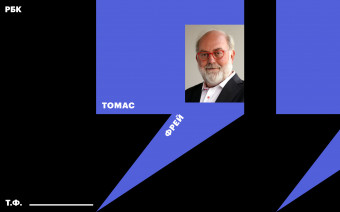Lizards can grow limbs, flatworms, starfish and sea cucumbers can grow entire bodies. Sharks are constantly changing their lost teeth. Similar superpowers can give us the achievements of regenerative medicine
Peter Diamandis on three key areas of regenerative medicine

As visionary and entrepreneur Peter Diamandis writes on his blog, investors poured $10 billion into it in 2019, with venture capital funding up 33% from a year earlier. More than a thousand clinical trials are being conducted around the world, thanks to which about 60 thousand patients have already undergone restorative therapies.
In regenerative medicine, there are three main major areas:
- Compensation: stem cells;
- Replacement: regeneration and bioprinting;
- Rejuvenation: infusion of "young blood" and parabiosis.
replenishment
A person is a set of more than 30 trillion cells. Each of them comes from one pluripotent cell type (capable of forming many others), called stem cells. They can replace any damaged tissue.
A child or young adult has many of them and they act as a "built-in" recovery system. But with age, their reserves in various tissues and organs are significantly reduced. In addition, stem cells undergo genetic mutations, which reduces their quality and efficiency.
Imagine your stem cells as a repair team in a newly built mansion. When the mansion is new and the repairmen are young, everything works great. But as the workers age and become fewer, your house falls into disrepair and finally collapses.
But what if we restore and rejuvenate the stem cell population?

This can be done by extracting and concentrating autologous (originating from one's own body) adult stem cells from sites such as adipose tissue or bone marrow. However, they are less numerous and have undergone mutations.
According to various estimates, the global stem cell market will reach $14.8 billion by 2022.
Many scientists and doctors now prefer an alternative source – obtaining stem cells from the placenta or umbilical cord left after childbirth. They can be injected into the joints or intravenously to rejuvenate the body.
Replacement
Every 10 minutes, someone is added to the US organ transplant waiting list, and as of March 2020, a total of more than 112,000 people are waiting for organ replacements. A huge number of people in need of new "spare parts" do not end up on the waiting list at all, and on average 20 people die every day while waiting for a transplant.
As a result, 35% of all deaths in the US alone can be prevented or delayed by organ replacement.
It can be assumed that the excessive demand for donor bodies will only increase: for example, unmanned cars will make the world more secure, and many donors of bodies are now people who died as a result of automotive and motorcycle accidents.
Solution options can be both 3D printing organs and xenotransplantation – animal transplantation to people need to be replaced. This may be, for example, organs of adult pigs: in size and shape they look like human.

There is a third approach to the issue of transplantation.
Imagine: only about 30 percent of the lungs of potential donors correspond to transplant criteria; Of these, only about 85 percent can be used upon arrival in the surgical center. As a result, most of the possible lungs will never get to the needy recipient.
A new medical technology is concentrated on solving this problem, the so-called ex vivo perfusion for donor lungs, hearts and kidneys. It reduces rejection risks, which can lead to an increase in the number of organs available for transplantation.
Rejuvenation
In the series from HBO "Silicon Valley", one of the episodes is called "Bloody Boy." In it, the meeting of the billionaire Gavin Belsson interrupts the young tightened guy twenty with a small year, which right during the conversation connects the entrepreneur to the blood transfusion apparatus.
Belon at the same time explains that "regular blood transfusions of a younger physically healthy donor can slow down the aging process."
Although this is largely a fantastic plot, the script shown in the episode is already being implemented today.
Studies in Stanford and Harvard showed that the transfusion of the blood of young animals by the elderly leads to the regeneration of many tissues and organs in the latter. It is also true: when overflowing the blood of older animals, young leads to the acceleration of aging processes in the latter.

But to benefit from this "youth fountain" was not easy.
Ambrosia startup from San Francisco recently began one of parabios tests: healthy participants at the age of 35 and older passed blood plasma transfusion procedures from donors under 25 years old, and the researchers controlled their blood over the next two years on the subject of molecular health and aging indicators.
However, after the warning of the US FDA management in 2019, Ambrosia was forced to close. The FDA concern is clear: today it is clearly lacking clinical data confirming the effectiveness of such treatment.
Another startup called Elevian, created on the basis of Harvard University, is selected to the issue of longevity with a careful, scientifically based strategy. The company was based after identifying specific factors that may be responsible for the effect of "young blood".
Example: The naturally occurring molecule GDF11, when injected into old mice, mimics many of the regenerative effects of "young blood", affecting the heart, brain, muscles, lungs and kidneys. In particular, it reduces age-related cardiac hypertrophy, accelerates skeletal muscle recovery, improves exercise tolerance, brain function and cerebral blood flow, and metabolism.
Based on these findings, Elevian is developing a therapy that aims to restore our body's natural regenerative abilities. This can eliminate some of the main causes of age-related human diseases.
Conclusion
In 1992, futurist Leland Kaiser coined the term "regenerative medicine":
“A new branch of medicine is being developed that will reverse the course of chronic disease and will, in many cases, restore tired and weakened organ systems.”
Since then, the industry has grown exponentially and surpassed $23.8 billion in 2018. Growth is expected to continue and exceed $151 billion by 2026.
A sharp increase in human life expectancy is not far off. Soon we will all have regenerative superpowers that were previously reserved for some animals and comic book characters.
Subscribe to the RBC Trends Telegram channel and stay up to date with current trends and forecasts about the future of technology, economics, education and innovation.

